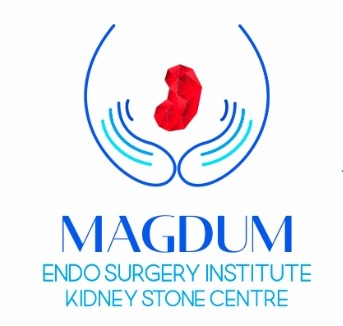Peptic ulcers can be a real pain, literally and figuratively. Knowing the early signs can help prevent discomfort and serious complications later on. This guide will walk you through recognizing those telltale signs and what steps to take next.
Introduction: Understanding Peptic Ulcers
Peptic ulcers are open sores that develop on the inside lining of your stomach and the upper portion of your small intestine. They can be quite common, but understanding them helps in knowing when to act. Peptic ulcers come in two main types: gastric ulcers which form in the stomach and duodenal ulcers which are located in the upper small intestine. It’s crucial to know which kind you’re facing because the symptoms and treatment may vary. Recognizing these symptoms early can prevent more severe health issues and make the treatment easier and more effective. The earlier you recognize the symptoms of peptic ulcers, the better your chances are for successful recovery and long-term health.
The Causes of Peptic Ulcers
Several factors can contribute to peptic ulcers, but one of the main culprits is an infection with a bacterium called Helicobacter pylori. This bacterium weakens the stomach’s protective lining, allowing acid to create an ulcer. Another common cause of peptic ulcers is the long-term use of nonsteroidal anti-inflammatory drugs (NSAIDs), like aspirin. While stress and spicy foods might not directly cause peptic ulcers, they can make the condition worse. Understanding these causes helps in avoiding triggers and managing symptoms better. Some people are at higher risk for developing peptic ulcers, such as individuals over 50, smokers, and those with a family history of ulcers.
The Importance of Timely Detection
Detecting peptic ulcers early is crucial because sometimes, they don’t show many symptoms, known as “silent” ulcers. When left untreated, these ulcers can cause severe complications, like bleeding or perforation of the stomach or intestine. Be on the lookout for alarming symptoms such as sharp or persistent abdominal pain. Recognizing these signs can lead to quick treatment and prevent serious health problems.
Recognizing the Initial Symptoms
Spotting peptic ulcers early means looking out for typical signs. These might include a burning pain in the stomach, often felt between meals or at night. The pain can vary, sometimes feeling better when you eat or take antacids. It’s unique because it might come and go, lasting a few minutes or several hours. Additional symptoms can include bloating, nausea, or even unexpected fullness after small meals. These early indicators help in seeking timely medical advice.
Uncommon Early Indicators
Some early signs of peptic ulcers are less obvious. You might notice a loss of appetite or even weight changes without trying. These symptoms don’t always scream “ulcer”, but they provide vital clues. Recurrent minor annoyances like slight stomach upset or fatigue might hint at a brewing ulcer, prompting further investigation.
Worsening Symptoms: Possible Complications
If peptic ulcers aren’t addressed, they can lead to severe issues. Be mindful of alarming signs such as vomiting blood or passing black, tarry stools. These symptoms indicate internal bleeding, which requires immediate medical attention. Knowing these severe signs is crucial, as they warrant urgent care.
Facts vs. Fiction: Common Ulcer Myths
Many myths surround peptic ulcers. One common misconception is that stress and spicy foods directly cause ulcers. While they don’t cause them, they can exacerbate symptoms. Similarly, some ulcers remain “silent,” becoming prevalent without noticeable symptoms. Understanding these myths helps in correctly identifying ulcers.
Evaluating Symptoms: Medical Interventions
When you suspect peptic ulcers, visiting a doctor is the best course of action. They can evaluate your symptoms thoroughly. A couple of tests and examinations can confirm the presence of an ulcer. These might include tests for Helicobacter pylori or imaging tests like endoscopy.
Steps to Monitor and Manage Symptoms
Managing symptoms of peptic ulcers involves vigilant tracking of what you’re experiencing. Keep a diary of symptoms and patterns. When your symptoms are persistent or worsen, it’s time to consult a healthcare professional. Incorporating lifestyle changes, like better eating habits and stress management, also aids recovery.
Conclusion: Managing Your Digestive Well-being
It’s essential to catch peptic ulcers early for effective management. Be proactive about your health. Making small, lifestyle changes can significantly impact your digestive well-being, ensuring you live a healthy life spice-free of ulcers.
Knowing the signs and symptoms of peptic ulcers can be vital in keeping your tummy troubles at bay. Armed with this knowledge, you’re better prepared to tackle any digestive issues and make informed choices about when to seek medical help and how can I treat a stomach ulcer at home. With early detection and the right guidance, peptic ulcers are manageable, paving the way towards a healthier life.
Contact Magdum Endo Surgery Institute for expert care in managing peptic ulcers and digestive health. Take charge of your digestive well-being today!

